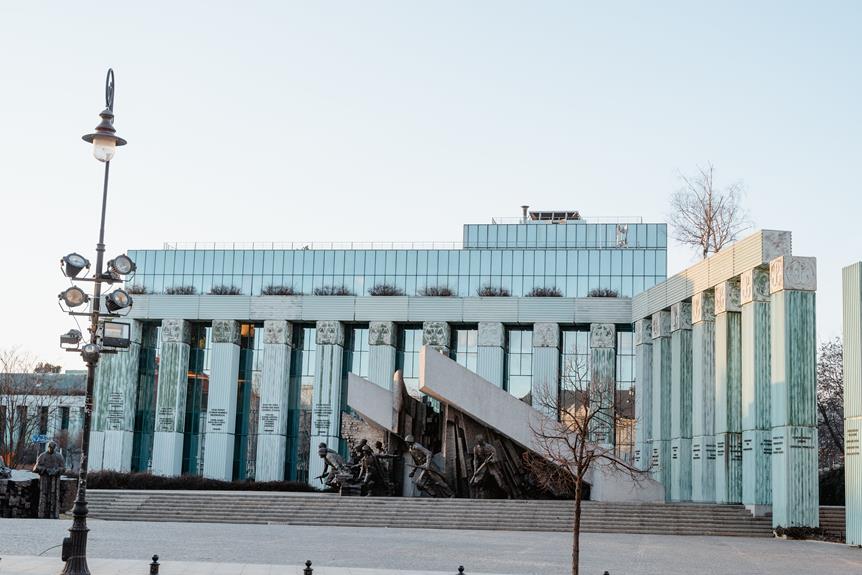Located in the northeastern part of Bangladesh, Sylhet District stands as a testament to a rich tapestry of culture and history. From its establishment in 1782 to its strategic significance in the country's economy and politics, this district has witnessed numerous changes and continues to be an intriguing destination for exploration. With a diverse demographic profile, captivating geography, and notable figures that have left their mark, Sylhet District offers a compelling narrative that begs to be discovered further.
History and Administration
Sylhet District, established on 3 January 1782, has a rich history and a well-organized administrative structure that has played a significant role in shaping the region's development and contributing to the overall progress of Bangladesh. The district was initially part of the Bengal Province under Dhaka Division until 1878. Following the partition of India in 1947, Sylhet became a part of East Pakistan. In 1983-84, it was subdivided into four districts, and in 1995, it became a part of Sylhet Division. The district is further divided into thirteen upazilas, each with its own administrative setup. The Deputy Commissioner of Sylhet is Md. Mozibor Rahman. Sylhet's political landscape has been influential, with several of Bangladesh's finance ministers being Members of Parliament from the district. The district's historical landmarks stand as a testament to its cultural richness and include notable sites such as the Shahjalal Shrine, the Sylhet Central Shahi Eidgah, and the Ali Amjad Clock Tower.
Demographics
The demographic composition of Sylhet District reflects a diverse population with varying cultural and religious backgrounds. According to the 2022 Census, the district had a population of 3,857,037, with 21.9% residing in urban areas. The average household size was 5.2, indicating a relatively large family structure. The literacy rate among individuals aged 7 and over was recorded at 76.3%, highlighting the importance of education in the region. The majority of the population, 92.52%, identifies as Muslim, while Hindus make up 7.32%. This religious diversity contributes to the rich tapestry of traditions and customs observed in Sylhet District. Furthermore, the district has seen significant population growth over the years, with the number of residents steadily increasing. This growth brings both opportunities and challenges for the region's infrastructure and resources.
Geography
Situated in northeast Bangladesh, the geography of Sylhet District is characterized by its hilly terrain, diverse physiography, and unique natural features. Here are four key aspects of Sylhet's geography:
- Geological Features: Sylhet is known for its distinctive sacrificial geomorphology, which includes hills, basins, and valleys. The region also boasts abundant limestone deposits, adding to its geological significance.
- Hilly Terrain: The district is surrounded by picturesque hills, such as the Jaintia, Khasia, and Tripura hills. These provide scenic beauty and contribute to the district's charm.
- Climate Patterns: Sylhet experiences a subtropical monsoon climate, with high humidity and heavy rainfall. The average annual rainfall in the district is a staggering 4,200 millimeters, making it one of the wettest regions in Bangladesh.
- Unique Natural Features: Sylhet is home to several natural wonders, including the famous Jaflong, a picturesque river valley adorned with crystal-clear water and vibrant stone collections. Additionally, the district lies on an earthquake-prone zone, adding an element of geological fascination.
The geography of Sylhet District encompasses a rich tapestry of geological features and climate patterns, making it a truly remarkable destination for nature enthusiasts and explorers.
Notable People
Renowned for its rich cultural and historical heritage, Sylhet District has been home to a plethora of notable individuals who have made significant contributions in various fields. These influential figures, known as cultural icons, have left an indelible mark on the district and beyond.
To honor their contributions, let's take a look at some of the prominent personalities from Sylhet District:
| Name | Field | Contributions |
|---|---|---|
| M.A.G. Osmani | Military | Commander-in-Chief of the Mukti Bahini during the Liberation War, played a crucial role in the fight for Bangladesh's independence. |
| Md. Saifur Rahman | Politics | Former Finance and Planning Minister, instrumental in shaping the economic policies of the country. |
| Shah Jalal and Shah Paran | Religion | Sufi saints and mystics who played a significant role in spreading Islam in the region and continue to inspire millions of devotees to this day. |
| Shah Abdul Karim | Music | Legendary Baul folk singer and composer, known for his soulful renditions that capture the essence of Sylhet's folk traditions. |
| Swami Nikhilananda and Swami Gambhirananda | Spirituality | Monks of the Ramakrishna Math and Mission Order, dedicated their lives to the promotion of spiritual and humanitarian values, leaving a lasting impact on society. |
These notable individuals have not only shaped the cultural fabric of Sylhet District but also influenced the wider society with their contributions in military, politics, religion, music, and spirituality. Their legacies continue to inspire generations and serve as a testament to the district's vibrant tapestry of talent and achievement.
Cultural Heritage
With a rich tapestry of traditions and customs, Sylhet District in northeast Bangladesh is known for its vibrant and diverse cultural heritage. Here are four aspects that highlight the district's cultural richness:
- Traditional Music: Sylhet is renowned for its unique musical traditions. Baul folk music, with its soul-stirring melodies and profound lyrics, holds a special place in the hearts of the locals. This spiritual music, accompanied by instruments like the ektara and dotara, reflects the mystical Sufi influence in the region.
- Traditional Crafts: The district is a hub of traditional crafts, showcasing the exceptional craftsmanship of its artisans. Sylhet is famous for its cane and bamboo products, intricately woven textiles like the famous Sari, and pottery. These crafts not only serve as a means of livelihood but also preserve the cultural heritage of the region.
- Festivals: Sylhet District celebrates a myriad of festivals throughout the year, each with its unique rituals and significance. The most prominent among them is the grand celebration of Pohela Boishakh, the Bengali New Year. The colorful processions, traditional dances, and vibrant cultural performances during these festivals showcase the district's rich cultural heritage.
- Cuisine: Sylhet's culinary heritage is a testament to its cultural diversity. The region is known for its distinctive dishes, such as the aromatic Sylheti biryani, pungent shatkora curry, and delectable pithe-puli sweets. These culinary delights are a reflection of the district's history and the fusion of flavors influenced by its multicultural past.
Sylhet District's cultural heritage, with its traditional music, crafts, festivals, and cuisine, continues to thrive and captivate both locals and visitors alike, making it a treasure trove of cultural experiences.
Traditional Cuisine
As we shift our focus to the traditional cuisine of Sylhet District, we delve into a gastronomic journey that showcases the region's rich cultural heritage through its distinct flavors and culinary traditions. Sylhet is known for its culinary delights, offering a wide array of dishes that reflect the local gastronomy. The traditional cuisine of Sylhet is heavily influenced by the region's geographical location, as well as its historical and cultural background. The use of aromatic spices, such as cinnamon, cardamom, and cloves, is a defining characteristic of Sylheti cuisine. Some popular dishes include Pitha (rice cakes), Shorshe Ilish (hilsa fish cooked in mustard sauce), and Tehari (a fragrant rice dish). The cuisine of Sylhet District is a testament to the region's vibrant cultural tapestry, and exploring its flavors is an essential part of experiencing the local heritage.
Festivals and Celebrations
Sylhet District is home to a vibrant array of festivals and celebrations that showcase the region's rich cultural heritage and provide a glimpse into the traditions and customs of its people. These festivals are deeply rooted in the history and religious beliefs of the community, and they play a significant role in bringing people together and fostering a sense of unity and belonging. Here are four notable aspects of the festivals and celebrations in Sylhet:
- Folk Music: Sylhet is renowned for its vibrant folk music traditions, which are an integral part of the festivals. The melodic tunes and soulful lyrics of the folk songs captivate the audience and create a festive ambiance.
- Religious Rituals: The festivals in Sylhet are marked by elaborate religious rituals that are performed with great devotion. These rituals are deeply ingrained in the religious beliefs of the community and serve as a way to seek blessings and express gratitude.
- Colorful Processions: Many festivals in Sylhet involve colorful processions, where people dress in traditional attire and carry ornately decorated idols or symbolic objects. These processions are a visual spectacle and attract large crowds.
- Traditional Cuisine: Festivals in Sylhet are also an opportunity to savor the region's delectable traditional cuisine. From mouth-watering sweets to savory delicacies, the food offerings during these celebrations are a treat for the taste buds.
Architectural Gems
The architectural heritage of Sylhet District showcases a diverse array of historic structures that reflect the region's cultural richness and historical significance. The district is known for its traditional architecture, which can be seen in the iconic landmarks that dot its landscape. One such landmark is the Shah Jalal Shrine, a magnificent mosque complex that houses the tomb of the famous Sufi saint. The shrine is a prime example of Islamic architecture, with its intricate carvings and stunning domes. Another notable structure is the Keane Bridge, a historic suspension bridge that spans the Surma River. Built during the British colonial era, the bridge is an engineering marvel and a symbol of the district's colonial past. These architectural gems not only serve as visual delights but also serve as reminders of Sylhet's rich history and cultural heritage.
Natural Attractions
Nestled in the enchanting landscapes of northeast Bangladesh, Sylhet District boasts a plethora of natural attractions that captivate visitors with their breathtaking beauty and ecological diversity. Here are four notable natural attractions that make Sylhet a must-visit destination:
- Wildlife Sanctuaries: Sylhet is home to several wildlife sanctuaries, such as the Lawachara National Park and Ratargul Swamp Forest. These protected areas provide a haven for a wide array of flora and fauna, including endangered species like the Hoolock gibbon and the fishing cat. Exploring these sanctuaries offers visitors a chance to immerse themselves in the tranquility of nature while witnessing its remarkable biodiversity.
- Tea Gardens: Sylhet is renowned for its extensive tea gardens, which cover vast expanses of rolling hills. These lush green plantations not only produce some of the finest tea in the world but also offer a picturesque backdrop for nature lovers. Visitors can take leisurely walks through the tea gardens, breathing in the fresh air and marveling at the meticulously manicured rows of tea plants.
- Waterfalls: Sylhet is blessed with numerous cascading waterfalls that add to its natural charm. The most famous among them is the Bisnakandi waterfall, known for its crystal-clear water that creates a shimmering spectacle as it cascades down the rocks. These waterfalls provide a refreshing respite from the heat, and their scenic beauty makes them popular spots for photography and relaxation.
- Lakes: Sylhet is dotted with serene lakes that serve as tranquil oases amidst the hustle and bustle of daily life. One such lake is the picturesque Pangthumai Waterfall Lake, surrounded by lush greenery and offering a peaceful ambiance. These lakes are ideal for boating, fishing, or simply enjoying a leisurely picnic while taking in the scenic beauty of the surroundings.
With its wildlife sanctuaries, tea gardens, waterfalls, and lakes, Sylhet District offers a diverse range of natural attractions that leave visitors spellbound. Whether it's exploring the rich biodiversity, strolling through tea plantations, or enjoying the tranquility of waterfalls and lakes, Sylhet's natural wonders provide an unforgettable experience for all who venture there.
Must-Visit Places in Sylhet
Renowned for its rich cultural heritage and awe-inspiring natural beauty, Sylhet District in northeast Bangladesh beckons travelers with a diverse range of must-visit places that showcase the region's unique charm and historical significance. When exploring Sylhet, one cannot miss the vibrant local markets that offer a glimpse into the daily lives of the people and the bustling bazaars that brim with colors, aromas, and flavors. These markets provide an opportunity to immerse oneself in the vibrant local culture, interact with the friendly locals, and indulge in delicious street food. Another must-visit attraction in Sylhet is its famous tea gardens. Set against the backdrop of rolling hills and lush greenery, these gardens not only offer scenic beauty but also provide an opportunity to learn about the tea production process. Visitors can witness the meticulous plucking of tea leaves, observe the tea processing techniques, and even sample freshly brewed tea. The Sylhet tea gardens are a treat for nature lovers and tea enthusiasts alike, offering a serene and immersive experience.
Frequently Asked Questions
What Is the Main Export of Sylhet District and How Does It Contribute to the Local Economy?
The main export of Sylhet district is tea, followed by citrus fruits. These exports significantly contribute to the local economy by generating income and employment opportunities. Sylhet is known for its high-quality tea production, which is highly sought after both domestically and internationally. The cultivation of citrus fruits also plays a crucial role in the district's economy, with Sylhet being known for its abundant and flavorful citrus harvests. These exports not only boost the agricultural sector but also contribute to overall economic growth and development in the region. Additionally, Sylhet's tea gardens and forests provide important habitats for endangered species such as the spotted deer and hoolock gibbon, further highlighting the district's rich biodiversity.
What Are Some of the Major Industries in Sylhet District and How Do They Impact the Local Community?
Some major industries in Sylhet District include tourism, agriculture, and manufacturing. These industries have a significant impact on the local community. Tourism brings in revenue and job opportunities, while agriculture provides sustenance and income for many residents. Manufacturing, particularly in the textile and tea sectors, contributes to the local economy by creating employment opportunities and generating export revenue. The main export of Sylhet, tea, plays a crucial role in the local economy, as it is a major source of income for farmers and contributes to the overall economic growth of the district.
Are There Any Endangered Species or Unique Wildlife Habitats in Sylhet District?
Endangered species conservation and biodiversity hotspots are important aspects of Sylhet District. The region's diverse physiography, including hills and basins, creates unique wildlife habitats. The district is known for its rich biodiversity, including various species of plants and animals. Efforts are being made to protect and conserve these endangered species and their habitats through initiatives such as wildlife sanctuaries and conservation programs. The presence of these unique wildlife habitats adds to the natural beauty and ecological significance of Sylhet District.
How Has Sylhet District Been Affected by Climate Change and What Measures Are Being Taken to Mitigate Its Impact?
Climate change has had significant impacts on Sylhet district, posing numerous challenges. Rising temperatures, erratic rainfall patterns, and increased frequency and intensity of natural disasters have affected the region's agriculture, water resources, and infrastructure. To mitigate these impacts, various measures are being taken. These include promoting sustainable agricultural practices, improving water management systems, enhancing disaster preparedness and response, and raising awareness about climate change. However, the district still faces obstacles such as limited resources, lack of technical expertise, and the need for stronger coordination among stakeholders to effectively address the challenges posed by climate change.
What Are the Educational Opportunities Available in Sylhet District and Are There Any Renowned Educational Institutions in the Area?
Sylhet district offers a range of educational opportunities to its residents. The area is home to several renowned educational institutions that provide quality education in various fields. These institutions include schools, colleges, and universities that offer programs in disciplines such as science, arts, commerce, and technology. Students in Sylhet district have access to a diverse range of educational options, ensuring that they can pursue their academic interests and aspirations. The presence of these renowned educational institutions contributes to the overall development and intellectual growth of the region.





